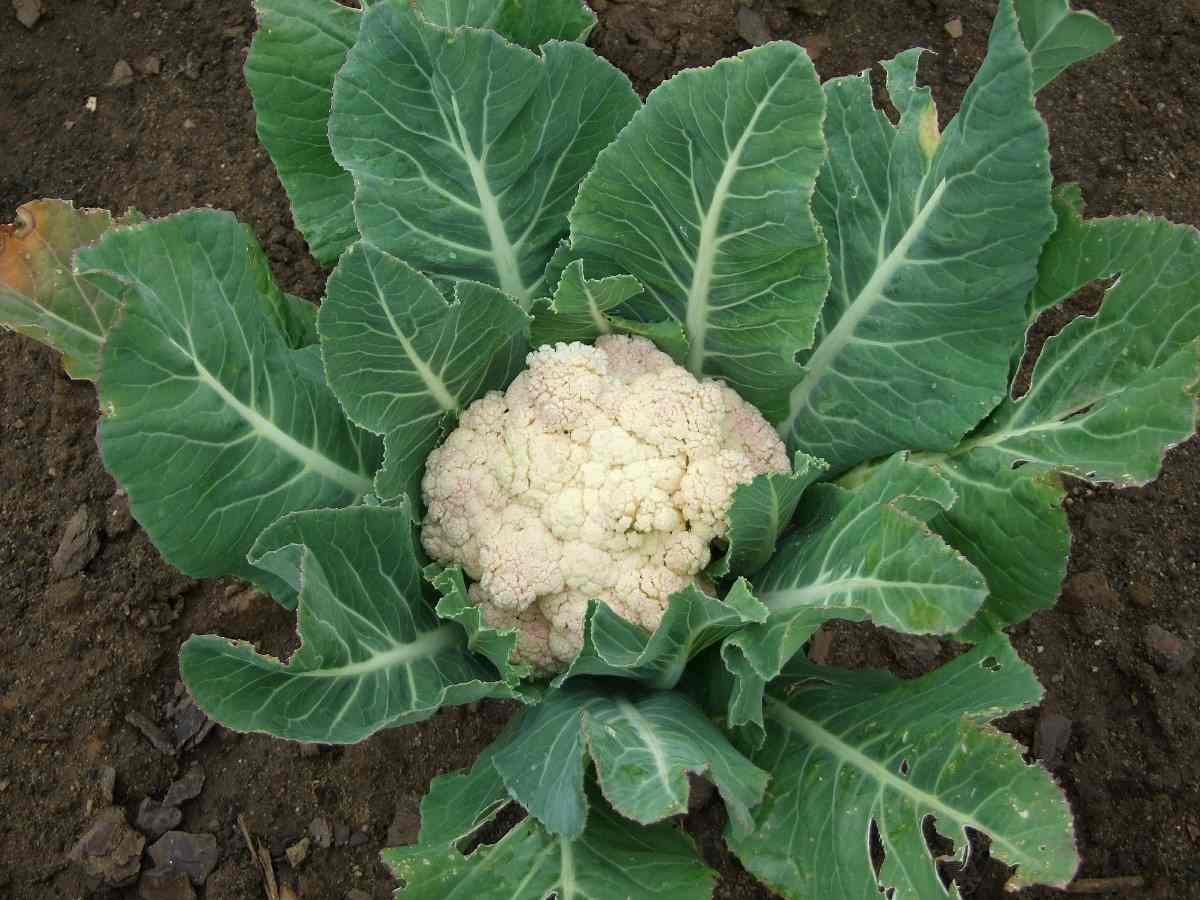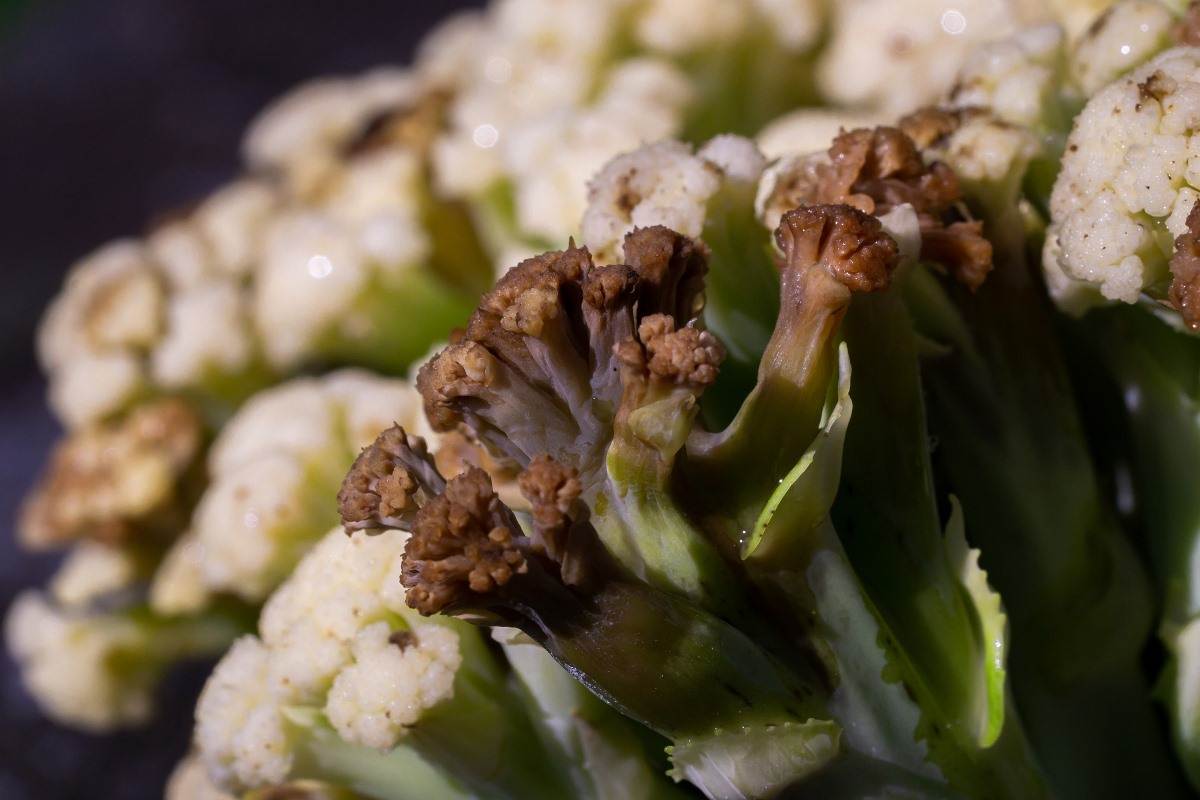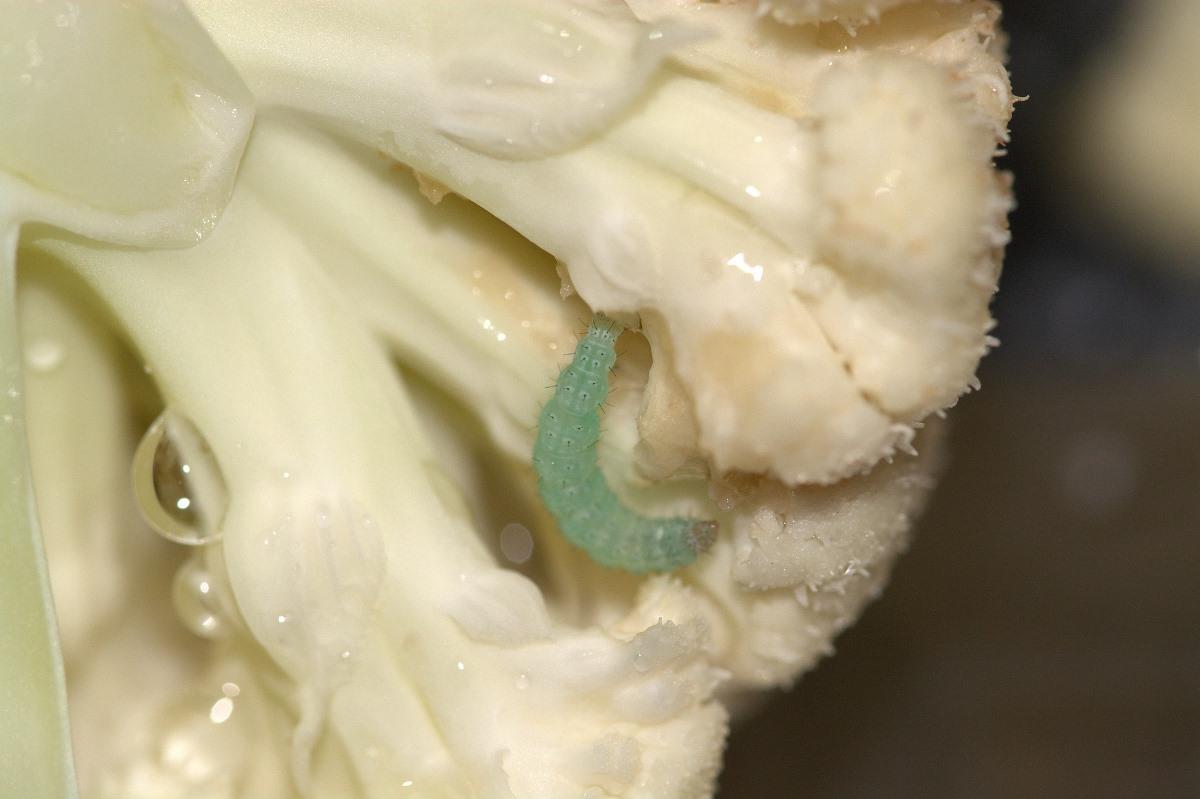Introduction to Cauliflower pests and diseases
If you are planning for a commercial Cauliflower farming, you must be aware of common pests and diseases of the crop. Cauliflower is an important winter vegetable grown in India. Cauliflower is a herbaceous biennial or annual vegetable plant in the family Brassicaceae has grown for its edible head. Cauliflower plants are shallow-rooted with a thickened, small stem. The ribbed leaves branch off the top of the stem and are light green. The Cauliflower plant can reach a height of 1 to 1.5 m and is most commonly grown as an annual, harvested between 60 and 100 days after planting. Insect pests are main important as it results in serious economic damage Cauliflower crop.
A step by step guide to Cauliflower pests, diseases and control methods
Cauliflower is one of the most popular and important winter vegetables and plays a key role in Indian agriculture. It’s an amazing vegetable that plays an important role in the human diet for high nutritional value and with added taste.
Conditions required for Cauliflower cultivation

- Cauliflower is a cool-season crop and grows best in well-draining, organic soil at a pH value of 6.5 or above. A high amount of organic matter in the soil will help to maintain moisture. The plant needs consistent cool temperatures to prevent ‘buttoning’ means the formation of several small heads instead of one large one.
- Cauliflower is less cold hardy than its relatives and it must be planted after the last frost as sub-freezing temperatures are likely to damage the plant. It is best grown as a Fall crop in cooler areas and only mature plants will survive frost in the Fall.
- Cauliflower is a cool-season vegetable. So, it produces a slightly moist and cool climate condition. The ideal monthly average temperature ranges from 15 to 20 °C. The early varieties need higher temperatures and longer day lengths. So, we prefer it to cultivate during the winter season or autumn-winter season.
- Plant spacing will mainly affect the final size of the Cauliflower head and the plants must be spaced at least 46 cm apart leaving approximately 75 cm between rows. General maintenance and care Cauliflower need consistent moisture during the growing season to produce large, tender heads. Do not let the soil dry out. The plants also require ample nitrogen and this should be applied as a side-dressing of fertilizer about halfway through the growing season.
- Cauliflower heads can be discolored by sunlight and when the Cauliflower head has reached 2.5 to 5.0 cm the plant requires ‘blanching’, a process that ensures that the head remains white. This is achieved by gathering the longest outer leaves together at the head and tying them with twine. Remove the twine periodically to check on the progress of the head, check for pests, and to allow the head to dry out after the rain. Self-blanching varieties are available which grow leaves that naturally cover the head.
- Cauliflower crop is ready for harvest 90 to 120 days after planting. The full white-coloured matured Cauliflower must be a harvest for sale immediately. If the harvesting is delayed, then the colour of the curds is becoming yellowish, and its thickness and charm disappear. Therefore it is very important to remove the Cauliflower at the right maturity time.
Major pests and diseases of Cauliflower and their control
Common Cauliflower diseases and their control
Bacterial soft rot
Symptoms – Water-soaked lesions on plant leaves and flower heads which increase to form a large rotted mass; the surface of lesions crack and exude slimy liquid which turns tan, dark brown, or black on exposure to air.
In case if you like this: Organic Radish Farming.

Management – Chemical treatments are not available for bacterial soft rot, control relies on cultural practices; rotate crops; plant in raised beds or well-draining soils; only harvest heads when they are dry; avoid damaging heads during harvest.
Blackleg
Symptoms – Damping-off of seedlings; irregular or round-shaped necrotic lesions on leaves with dark margins; lesions may be covered in pink masses in favorable.
Management – Use disease-free seed or treat with hot water to remove fungus before planting; remove and destroy crop debris after harvest or plough deeply into the soil.
Black rot
Symptoms – The main symptom for black rot disease is irregularly shaped dull yellow areas along leaf margins and creates a characteristic “V-shaped” lesion; lesions may coalesce along the leaf margin to give the plant a scorched appearance.
Management – The best method for controlling the black rot disease is through the use of good sanitation practices; plant resistant varieties; rotate crops to non-cruciferous crops every 2 years; control cruciferous weed species which act as a reservoir for bacteria; plant pathogen-free seed.
Club root
Symptoms – Stunted, slow-growing plants; yellowish leaves which wilt during the day and rejuvenate in part at night; distorted, swollen, roots; extensive gall formation.
Management – It can survive for many years if the pathogen is present in the soil, elimination of the pathogen is economically unfeasible; rotating crops generally does not provide effective control; Avoid field-grown transplants unless produced in a fumigated bed and plant only certified seed; applying lime to the soil can reduce fungus sporulation.
Cauliflower mosaic virus
The leaves of the attacked plants are faded, the veins are slightly transparent, and the tissues between the veins are turning yellow. The leaves have an embossed aspect, with the edges curbed towards the superior part of the leaf. The affected seedlings remain small and the plants which reach maturity have a low production rate. This disease attacks all the plants from the Brassicaceae family. The Cauliflower leaves can also get discolored rings. The virus is transmitted from one year to another through infected seeds, during the vegetation period it is being transmitted by the insects.
Prevention and control measures –
- Using certified and healthy and seeds only
- Taking out and destroying the plants with present the symptoms of the disease
- Applying insecticides to get the insect population under control
Downy mildew
Downy mildew is caused by the fungus-like organism, which is an obligate parasite, needing live plants to grow and reproduce. The disease affects leaves, stems, and heads of Cauliflower.
Symptoms – Small angular lesions on the upper surface of plant leaves which enlarge into orange or yellow necrotic patches; white fluffy growth on undersides of leaves.
Management – Remove all crop debris after harvest; rotate with non-brassicas; it is possible to control downy mildew with the application of an appropriate fungicide. Management programs for downy mildew should include a rotation away from brassica crops for at least three years. Plant Cauliflower in well-drained fields with good air circulation to reduce the likelihood of infection. Reduce periods of wet foliage by lowering planting densities and managing irrigation schedules. Avoid overhead irrigation if possible, and do not irrigate using sources of water that may be contaminated with the pathogen. Destroy crop debris promptly after harvest.
Powdery mildew
Symptoms – Small white patches on lower and upper leaf surfaces which may also show purple blotching; patches coalesce to form a dense powdery layer which coats the leaves; leaves become chlorotic and drop from the plant.
Management – Avoid excessive application of nitrogen fertilizer which encourages powdery mildew growth; powdery mildew can be controlled by the application of sulfur sprays or vapours.
Black Rot
The symptoms of the Black Rot infestation can vary a lot due to the host plant, the age of the plant, and the environment. Since the early days of vegetation, small, wet spots appear of the leaves, spots which turn brown as time passes. Another symptom is represented by V-shaped, yellow coloured lesions which grow, most of the time, along the edges of the leaves. After some time, these lesions wilt and turn brown or get a coffee-like color. The attacked leaves wilt partially or completely, get a parchment-like texture and fall off the plant.
Prevention and control measures –
- Using healthy and certified seeds only
- Taking out and destroying the affected leaves from the crop
- Chemical treatments, using Polyram DF, Equation Pro, and Aliette.
Sclerotinia stem rot
Symptoms – The main symptom of this disease is irregular, necrotic lesions on leaves; white-grey lesions on stems; reduced pod set; shattering seed pods.
Management – Rotate crop to non-hosts for at least 3 years; control weeds; avoid dense growth by planting adequately spaced rows; apply appropriate foliar fungicides.
White rust
Symptoms – White pustules on cotyledons, stems, leaves, and flowers which coalesce to form large areas of infection; leaves may roll and thicken.
Management – Plant only disease-free seed; Rotate crops; apply an appropriate fungicide if the disease becomes a problem.
Cauliflower mosaic
Symptoms – Mosaic patterns on leaves; vein banding and or vein clearing; stunted plant growth; reduced head size.
Management – Controlling of cruciferous weeds which can act as a reservoir for the virus; control aphid populations on plants by applying an appropriate insecticide.
Ringspot
Symptoms – The main symptom of this disease is small, purple spots surrounded by a ring of water-soaked tissue on leaves which mature to brown spots with olive green borders 1 to 2 cm across; spots may develop numerous fruiting bodies which develop a concentric pattern or give them a black appearance; heavily infected leaves may dry up and curl inwards.
Management – Refrain from planting in areas known to have had the disease previously; rotate crop to non-brassicas; sanitize tools and equipment regularly; apply an appropriate fungicide if the disease is identified in the crop.
Common Cauliflower pests and their control
You can also check this: Organic Cucumber Farming In Greenhouse.

The most common Cauliflower pests are aphids, flea beetles, slugs and snails, and leafhoppers.
Beet armyworm of Cauliflower Pests
Symptoms – Singular, or closely grouped circular to irregularly shaped holes in foliage; heavy feeding by young larvae leads to skeletonized plant leaves; egg clusters of 50 to 150 eggs may be existing on the leaves; young larvae are pale green to yellow while older larvae are generally darker green with a dark and light line running along the side of their body and a yellow or pink underside.
Management – Some organic methods of controlling the beet armyworm disease include biological control by natural enemies that parasitize the larvae and the application of Bt (Bacillus thuringiensis); there are chemicals obtainable for commercial control but many that are available for the garden do not provide adequate control of the larvae.
Cabbage aphid of Cauliflower Pests
Symptoms – Large populations can cause stunted growth or even plant death; insects can be visible on the plant leaves and are covered with a white waxy coating, and prefer to feed deep down in cabbage head and may be obscured by the plant leaves.
Management – If the aphid population is limited to just a few leaves or shoots then the infestation can be pruned out to provide control; check transplants for aphids before planting; reflective mulches such as silver-colored plastic can deter aphids from feeding on plants; sturdy plants can be sprayed with a strong jet of water to knock aphids from leaves; insecticidal soaps or oils such as neem or canola oil are usually the best methods of control; always check the labels of the products for specific usage guidelines before use.
Cabbage looper of Cauliflower Pests
Symptoms – Large or small holes in plant leaves; caterpillars are pale green with white lines running down either side of their body; caterpillars are easily distinguished by the way they arch their body when moving; eggs are laid singly, usually on the lower leaf surface close to the leaf margin, and are white or pale green.
Management – Looper populations are held in check by natural enemies; biological controls like spraying with Bt can be effective at controlling looper numbers; selective insecticides help to protect populations of natural enemies on the crop.
Troubleshooting Cauliflower Problems
If possible, plant disease-resistant seeds. If that isn’t possible, pre-treat seeds with hot water to kill bacterial infections. Don’t use old seeds or improperly stored seeds, which will produce weak plants susceptible to disease. Avoid damaging Cauliflower plants. Practice crop rotation to prevent the common diseases of Cauliflower. This includes avoiding the planting of any of Cauliflowers relatives (such as broccoli, cabbage, Brussels sprouts, or kale) for at least three years. Lime the soil to prevent fungal infections. Use only new or sterile flats and tools. Allow plenty of space between seedlings to foster good air circulation. Avoid watering from above, which will spread potential spores more easily. Remove and destroy seedlings that show signs of infection.
In case if you are interested in this: Organic Fertilizers For Rose Plants.